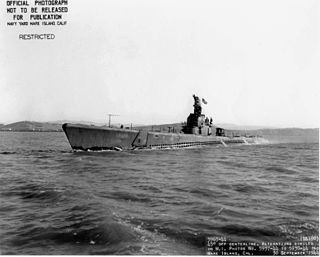
USS Spearfish (SS-190), a Sargo-class submarine, was the only ship of the United States Navy to be named for the spearfish, any of several large, powerful, pelagic fishes of the genus Tetrapturus allied to the marlins and sailfishes.

USS Drum (SS-228) is a Gato-class submarine of the United States Navy, the first Navy ship named after the drum, a type of fish. Drum is a museum ship in Mobile, Alabama, at Battleship Memorial Park.

USS Pipefish (SS-388/AGSS-388), a Balao-class submarine, was the only ship of the United States Navy to be named for the pipefish.

USS Toro (SS-422), a Tench-class submarine, was the only ship of the United States Navy to be named for the toro, a name applied to various fish including the cowfish, the catalufa, and the cavallo.
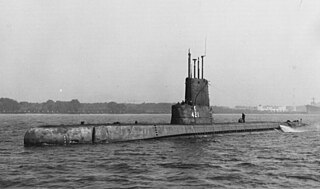
USS Trutta (SS-421), a Tench-class submarine, was the only ship of the United States Navy to be named for the trutta, a variety of trout, distinguished from the typical trout by its small, black spots and its smaller and fewer scales. She was originally assigned the name Tomtate, often misspelled as Tomatate, and would have made her the only ship named for the tomtate, a food fish of warm American waters having a compressed body, a toothless palate, and conical jaw teeth, but was renamed Trutta on 24 September 1942. Her keel was laid down on 22 May 1944 by the Portsmouth Navy Yard. She was launched on 18 August 1944 sponsored by Mrs. Edward C. Magdeburger, and commissioned on 16 November 1944 with Commander Arthur C. Smith in command.

USS Croaker (SS/SSK/AGSS/IXSS-246), a Gato-class submarine, was the first ship of the United States Navy to be named for the croaker, any of various fishes which make throbbing or drumming noises.
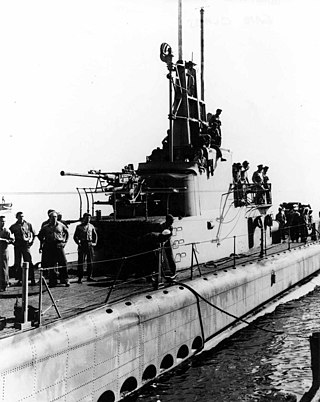
USS Gabilan (SS-252), a Gato-class submarine, was the only ship of the United States Navy to be named for the gabilan, an eagle ray of the Gulf of California.

USS Rock (SS/SSR/AGSS-274), a Gato-class submarine, was a ship of the United States Navy to be named for the rockfish, a striped bass found in the Chesapeake Bay region and elsewhere along the United States East Coast.

USS Steelhead (SS-280), a Gato-class submarine, was a ship of the United States Navy named for the steelhead, a North American trout found from California to Alaska.

USS Dragonet (SS-293), a Balao-class submarine, was a ship of the United States Navy named for the dragonet.

USS Hackleback (SS-295), a Balao-class submarine, was a ship of the United States Navy named after the hackleback, a freshwater fish of the sturgeon family.
USS Moray (SS-300), a Balao-class submarine, was a ship of the United States Navy named for the moray, a family of large eels found in crevices of coral reefs in tropical and subtropical oceans.

USS Loggerhead (SS-374/AGSS-374), a Balao-class submarine, was a ship of the United States Navy named for the loggerhead, Caretta caretta, a very large, carnivorous sea turtle common in the warmer parts of the Atlantic, Pacific, and Indian Oceans.

USS Pilotfish (SS-386), a Balao-class submarine, was a ship of the United States Navy named after the pilot fish, a carangoid fish, often seen in warm latitudes in company with sharks.

USS Piranha (SS-389/AGSS-389), a Balao-class submarine, was the only ship of the United States Navy to be named for the piranha. Piranha conducted six war patrols during World War II, receiving five battle stars. She was scrapped in 1970.
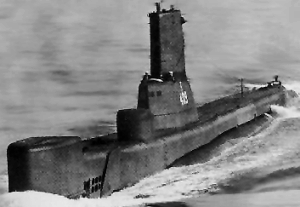
USS Piper (SS/AGSS-409), a Balao-class submarine, was a ship of the United States Navy named after the piper. Although built late in World War II, Piper completed three successful war patrols before the cessation of hostilities, operating as a life guard for plane strikes and as an advance picket for fast carrier task forces.

USS Spikefish (SS/AGSS-404), a Balao-class submarine, was a ship of the United States Navy, named for the spikefish. She was the first United States submarine to record 10,000 dives.

USS Spot (SS-413) was a Balao-class submarine of the United States Navy, named for the spot, a small sciaenoid food fish of the Atlantic coast, with a black spot behind its shoulders.
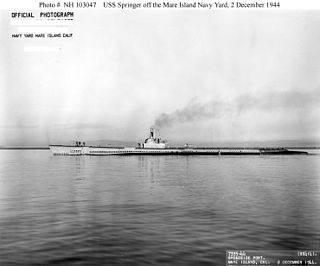
USS Springer (SS-414) was a Balao-class submarine of the United States Navy, named after the springer, a Grampus.
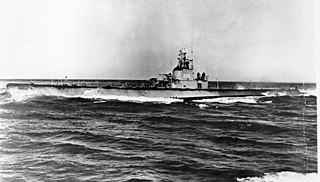
USS Cobia (SS/AGSS-245) is a Gato-class submarine, formerly of the United States Navy, named for the cobia.




















